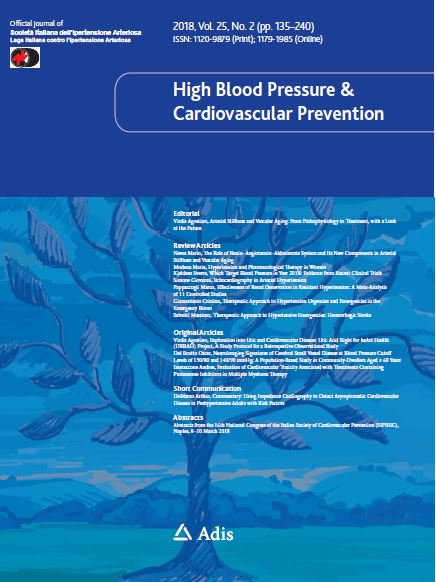Publications
 Prevalence of Hypertension in Homeless Adults: An Interprofessional Education Community‑Based Health Fairs Cross‑Sectional Study in Urban Long Beach, California.
Prevalence of Hypertension in Homeless Adults: An Interprofessional Education Community‑Based Health Fairs Cross‑Sectional Study in Urban Long Beach, California.
Albert Nguessan Ngo, PhD 1,2*. Mohammed Amirul Islam 1 . Judy Aoyagi 1 . Zsuzsanna Sandor 3,4 . Szabo Sandor 3,4
1 Pharmaceutical Science, School of Pharmacy, American University of Health Sciences, 1600 E. Hill St, Signal Hill, CA 90755, USA
2 American University of Health Sciences Foundation, Signal Hill, CA, USA
3 Veteran Affairs Long Beach Healthcare System, Long Beach, CA 90822, USA
4 School of Medicine, University of California, Irvine,CA 90822, USA
Received: 26 October 2020 / Accepted 3 December 2020 and published in High Blood Pressure & Cardiovascular Prevention (2020)
Italian Society of Hypertension 2020
Aim
To determine the prevalence of hypertension in a homeless community during an interprofessional education (IPE)-based health fair.
Methods
Homeless participants were recruited between August 2019–September 2019. Faculty, nursing, and pharmacist students, educated 477 participants, aged 18–80 years, on the risk factors associated with untreated hypertension. Then, participants self-completed the consented demographic survey questionnaire. Finally, the sitting blood pressure (BP) was recorded three times based on a standardized procedure, using Omron BPN monitor with cuff.
Results
Seven pharmacy students, nine nursing students, two registered nurses, five registered pharmacists, and two medical doctors collaboratively provided health education to the homeless community and screened their sitting BP. 390/477 (81.8%) of participants satisfied the inclusion criteria. Participants (54.7%) of the reported education level was at the high School level or less. More than the half of the participants (average age of 51 ± 13 years) had hypertension (median SBP/DBP ≥ 130/82.7 mmHg), respectively. The prevalence of hypertension for the overall cohort was 61.52% (95% CI, 56.59–66.35). Age (p value = 0.000) was significantly associated with hypertension based on the binary logistic analysis.
Conclusions
This study demonstrated a high prevalence of hypertension in the homeless community in Long Beach, California with high risk of cardio-vascular events or strokes. This works sheds new light on an issue of major public health significance and points to the need for fostering IPE community-based health fairs intervention program for the US homeless population.
Full article https://rdcu.be/ccssg

Principal Component Analysis of Morbidity and Mortality among the United States Homeless Population: A Systematic Review and Meta-Analysis.
Albert Nguessan Ngo, PhD 1,2* and David Joseph Turbow, PhD 3*
1 Pharmaceutical Science, School of Pharmacy, American University of Health Sciences, USA
2 American University of Health Sciences Foundation, Signal Hill, CA, USA
3 Institutional Research and Assessment, American University of Health Sciences, USA
Background
Homelessness is a modern social and economic problem of major public health significance. In the United States of America (USA), several studies have identified different leading causes of morbidity and mortality among homeless populations.
For this systematic review, Principal Component Analysis (PCA), a multi-variate technique is applied to elucidate the strength of association of comorbidities and mortality among the U.S homeless population.
Methods
A search was conducted for published data for the 20-year period between 1/1/1998 and 12/31/2018. The keywords consisted of the terms: homeless, mortality, morbidity, United States, and health disparities. Data were drawn from cohort studies, observational studies and surveillance reports. Data were then extracted from eleven studies for meta-analysis using PCA.
Results
The first principal component analysis (PCA1) revealed a strong correlation between the co-morbidities of heart disease, cancer, diabetes, and psychoactive substance use. By contrast, PCA2 and PCA3 were strongly correlated to respiratory disease, and transportation-related injuries, respectively. Diseases correlated to PCA1, PCA2, and PCA3 were the major causes of mortality and morbidity of US homeless people with a prevalence of 53.88% (95% Confidence Interval, Bartlett’s test, Chi-square (χ) = 228.941, degree of freedom (DF = 41.924)); 26.03% (χ = 176.27, DF = 176.274) and 19.85% (χ = 131.266, DF = 131.266), respectively.
Conclusions
Based on the Principal Component Analysis (PCA), homeless people in the U.S. die mainly from heart disease, cancer, diabetes, and psychoactive substance use. Thus, there is a need to address health disparities and to further promote health education and intervention programs.
